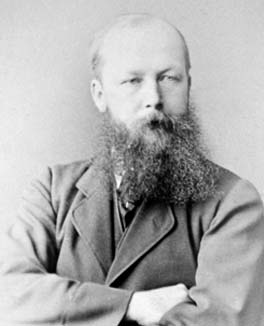


 تاريخ الرياضيات
تاريخ الرياضيات
 الرياضيات في الحضارات المختلفة
الرياضيات في الحضارات المختلفة 
 الرياضيات المتقطعة
الرياضيات المتقطعة
 الجبر
الجبر
 الهندسة
الهندسة 
 المعادلات التفاضلية و التكاملية
المعادلات التفاضلية و التكاملية 
 التحليل
التحليل
 علماء الرياضيات
علماء الرياضيات |
Read More
Date: 12-11-2016
Date: 12-11-2016
Date: 13-11-2016
|
Died: 18 November 1891

Joseph Wolstenholme's father was a Methodist minister. Joseph studied at Wesley College in Sheffield, then entered St John's College, Cambridge on 1 July 1846 and, four years later, he graduated as Third Wrangler (he was ranked third in the list of first class degrees given in mathematics that year). The second wrangler that year was Henry Watson.
Wolstenholme was awarded a fellowship to St John's College in March 1852. He accepted a fellowship from Christ's College, Cambridge in November of the same year. It appears that men from Lancashire were given preference at this time in the competition for fellowships at Christ's College. The fact that he had been at John's College and not Christ's College did result in a protest being made against his election but it was soon dropped.
On four occasions during the years that he held the fellowship at Christ's College Wolstenholme was an examiner for the mathematical tripos (1854, 1856, 1863, 1870). One of the conditions of fellowships was that the holder had to be unmarried, so when Wolstenholme wished to marry a Swiss girl on 27 July 1869, he had to resign his fellowship. However, Wolstenholme continued to take pupils at Cambridge for two years after resigning his fellowship.
In 1871 Wolstenholme was appointed professor of mathematics at the Royal Indian Engineering College at Cooper's Hill, near London. He held this post until he retired in 1889.
He married Therese Wolstenholme (born in Zurich, Switzerland about 1851) and they had three children: Rowland (born about 1873), Cecil (born about 1874) and Aubrey (born about 1877).
Forsyth is quoted in [1] (and a shorter quote in [2]) regarding Wolstenholme's contributions to mathematics. Gow notes in [2] that Forsyth campaigned strongly against the syllabus and the style of examinations at Cambridge so is likely to rate Wolstenholme's contribution to the traditional Cambridge system somewhat less than others:-
Wolstenholme was the author of a number of mathematical papers... . They were usually concerned with questions of analytical geometry, and they were marked they were marked by a peculiar analytical skill and ingenuity.
His greatest contribution towards mathematics was his volume of mathematical problems. Forsyth notes ([1] and [2]):-
... Wolstenholme's problems have proved a help and a stimulus to many students. A collection of some three thousand problems naturally varies widely in value, but many of them contain important results, which in other places or at other times would not infrequently have been embodied in original papers. As they stand, they form a curious and almost unique monument of ability and industry, active within a restricted range of investigation.
Gow in [2] shows up a rather different side of Wolstenholme's character. Leslie Stephen, the father of the author Virginia Woolf, studied mathematics at Cambridge and held a fellowship at Cambridge from 1854 till 1864. During that period he became friends with Wolstenholme. Several years after Wolstenholme's death, Stephen wrote down details of his own life for his children and in these he refers to Wolstenholme (see [2]):-
I think especially of poor old Wolstenholme, called 'the woolly' by you irreverent children, a man whom I had first known as a brilliant mathematician at Cambridge, whose Bohemian tastes and heterodox opinions had made a Cambridge career inadvisable, who tried to become a hermit at Wastdale. He had emerged, married an uncongenial and rather vulgar Swiss girl, and obtained a professorship at Cooper's Hill. His four sons were badly brought up: he was despondent and dissatisfied and consoled himself with mathematics and opium. I liked him or rather was very fond of him, partly from old association and partly because feeble and faulty as he was, he was thoroughly amiable and clung to my friendship pathetically. His friends were few and his home life wretched. ... [We] had him stay every summer with us in the country. There at least he could be without his wife.
There is another side to this friendship between Wolstenholme and Stephen which is the main purpose of the article [2]. Stephen's daughter, Virginia Woolf, was a young girl when Wolstenholme shared the family holidays. She later incorporated Wolstenholme into one of her most famous books To the Lighthouse.In this book Mr Augustus Carmichael is based on Wolstenholme.
Articles:



|
|
|
|
"عادة ليلية" قد تكون المفتاح للوقاية من الخرف
|
|
|
|
|
|
|
ممتص الصدمات: طريقة عمله وأهميته وأبرز علامات تلفه
|
|
|
|
|
|
|
ضمن أسبوع الإرشاد النفسي.. جامعة العميد تُقيم أنشطةً ثقافية وتطويرية لطلبتها
|
|
|